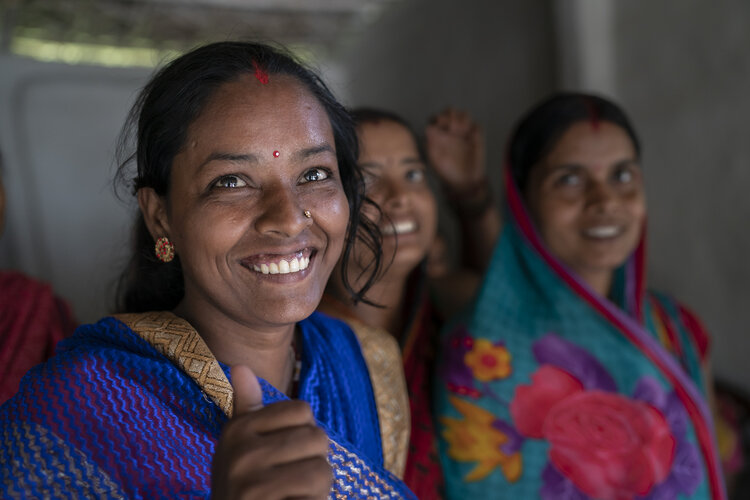Gender in Agriculture
Overview
The ACIAR SDIP program used new approaches to research and produced new knowledge which promotes a more nuanced macro and micro understanding of women’s roles in agriculture in the EGP, and the impacts of systems change.
Recognising the gendered dimensions of the water, energy and food sectors and nexus, and the disparities in the agency and engagement of women and men, projects were framed to allow gendered data collection and aimed for gender equity or women-positive implementation. A review of the macro and micro factors impacting on gender outcomes within the EGP contextualised the various pieces of work, and assisted in assessing outcomes and forming recommendations.
This research challenges policy makers, academics and donors to ensure they target their interventions based on an appreciation of both the macro and micro drivers which affect the situation of rural women.

Understanding the context for women’s engagement in agriculture
Feminisation is a term that is commonly applied to the EGP, where there are high rates of migration in response to persistent rural poverty. Indeed, discussions about women in agriculture usually start with the assumption that agriculture across the region is becoming increasingly left to women as men leave for other jobs.
However, a more detailed look at women’s participation in the workforce across the EGP reveals an inconsistent trend for Nepal, Bangladesh and India. The women’s Workforce Participation Rate (WPR) is high and increasing in Nepal (80%) and increasing in Bangladesh (34%), but the same is not true for the Indian EGP where the WPR is just 16% and has been declining for decades. Of particular concern is Bihar state, where the WPR dropped to just 5% in 2012, a trend that is counter-intuitive in a state with high levels of poverty, high rates of male outmigration and low agricultural productivity, factors that are normally associated with a feminising trend.
Patterns of feminisation in Bangladesh and Nepal follow an expected trend. The defeminization trend observed in India is a serious concern, and the widely accepted reasons for defeminization in India cannot entirely explain the missing working women in the rural EGP. A pattern of defeminization linked with higher levels of unemployment is indicative of distress and suggests that women are displaced from jobs, or that there is a lack of jobs that women can take up along with the care work.
The work participation rates of women in the rural EGP demonstrate considerable regional variations, and diverging trends over a period of time, defying its relatively small size and the shared agricultural and economic characteristics of the area. They also highlight that feminisation in rural areas is not a necessary outcome of male selective outmigration.
Policies are needed that address and cater for the different situations for women and their engagement in the workforce. These must also work towards ensuring that women are not only engaged in the workforce when they want to be, but are empowered to make decisions and control resources more equally.
Identifying the impacts of farming system change for women
The SRFSI project introduced, tested and promoted CASI-based technologies which can reduce inputs (labour, water, seed) while improving profitability and maintaining yield. Increases to gross margins for households using CASI compared to conventional practices were experienced by both male and female headed households. Importantly, the increase in returns for female headed households was usually greater than for male headed households, demonstrating higher impact and improved benefits for women.
Although weeds are often cited as a major issue when farmers use CA farming techniques, targeted research in Nepal, West Bengal and Bangladesh found that the use of CASI systems seemed to have positive impacts on how farmers manage weeds. Due to the use of herbicides before seed sowing, farmers in general did not report weeds as a problem. Little to no difference in knowledge was observed between men and women for chemical application and weed identification. Substantial time savings in weeding were identified under CASI except for an increase in personal weeding hours by male farmers in Bangladesh, where women do not traditionally work in the field.
Many households identified that the time savings and additional income as a result of using CASI practices allowed them to diversify into alternative income generating activities.
Encouraging participation
Between 2014 – 2018, the SRFSI project trialled CASI technologies with smallholder farmers in eight districts of the EGP. In line with the project’s aim to be gender-inclusive, there was a concerted effort to mainstream gender in all project activities. The project utilised three main strategies to engage females as cultivators. First, prompting gender mainstreaming of (project funded) extension services with a 30% quota for female participants in all project activities. Second, development of female entrepreneurs as part of improving value chains. Third, partnering with NGOs proficient in socio-economic mobilisation of resource-poor rural females. All project data was gender disaggregated.
Promoting the need for inclusive data collection
Experiences in several ACIAR SDIP projects working with large, national level data sets highlight that the way data is collected in national surveys and census makes it difficult to disaggregate results to understand the impacts on women. The secondary data that is currently on hand from the various jurisdictions is not sufficiently nuanced to answer questions related to women’s empowerment. In some cases no separate data on women or woman-headed households is available; or the data on some gender concepts (e.g. empowerment) is on hand but cannot be meaningfully traced to other data that would act as proxies for wellbeing.